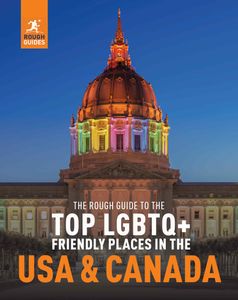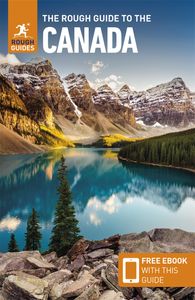Dawson Creek
Except for a small museum next to the town’s eye-catching red grain hopper, and the cairn marking Mile Zero of the Alaska Highway, there is one major attraction worth visiting in DAWSON CREEK. The Alaska Highway House (summer daily 9am–5pm; by donation; t 250 782 4714), at 10201 10th St, showcases the history of the Alaska Highway with interpretive exhibits and audiovisual displays.
Driving the Alaska Highway
Food, fuel and lodgings are found at between 40- and 80km intervals, though cars still need to be in good shape. You should drive with headlights on at all times and take care when passing – or being passed by – heavy trucks. The wilderness – anything up to 800km of it on each side – begins at the highway’s edge and unless you’re very experienced, off-road exploration is not suggested. Free guides and pamphlets are available at visitor centres along the route through to Fairbanks, but The Milepost (w themilepost.com), the road’s bible, is, for all its mind-numbing detail, the only one you need buy.
History of the Alaska Highway
The Alaska Hwy runs northeast from Mile Zero at Dawson Creek through the Yukon to Mile 1520 in Fairbanks, Alaska. Originally a military road, it’s now an all-weather highway travelled by bus services and thousands of tourists out to recapture the thrill of the days when it was known as the “junkyard of the American automobile”. It no longer chews up cars, but the scenery and the sense of pushing through wilderness remain alluring.
In 1940 there was no direct land route to the Yukon or Alaska, other than trappers’ trails. But with Japan attacking in the Pacific – threatening traditional sea routes north and seemingly ready to attack mainland Alaska – it prompted the US and Canadian governments to build a road north. A proposed coastal route from Hazelton, BC, was deemed susceptible to enemy attack, while an inland route bypassing Whitehorse and following the Rockies would have taken five years to build. This left the Prairie Route, which followed a line of air bases through Canada into Alaska.
Construction began in March 1942, the start of months of misery for the twenty thousand mainly US soldiers who had to ram a road through mountains, mosquito-ridden bogs and over icy rivers during harsh weather. Crews working on the eastern and western sections met at Contact Creek, BC, in September 1942 and completed the last leg to Fairbanks in October; this engineering triumph took less than a year but cost around $140 million.
By 1943 the road needed virtual rebuilding. For seven years workers widened it, raised bridges, reduced gradients, bypassed swampy ground and began removing some of its vast bends – the reason why it’s now only 1488 miles (2394km) to the Mile 1520 post in Fairbanks. The highway was opened to civilian use in 1948, but within months so much traffic had broken down and failed to make the trip that it was closed for a year.
The road is now widely celebrated, as in August 2012 when a convoy of 97 historical military vehicles departed Dawson City and travelled south along the Alaska Highway in commemoration of its seventieth anniversary. But there are aspects of its story that are glossed over. Many of the toughest sections were assigned to African-American GIs to complete, few of whom received any credit. Aboriginal peoples on the route were also affected; scores of them died from epidemics brought in by workers. The building of the controversial Canol pipeline at the same time left the area littered with poisonous waste and construction junk. Wildlife also suffered, with trigger-happy GIs taking pot shots as they worked.
Watson Lake
Beyond the Liard Hot Springs the Alaska Hwy follows the Liard River, settling into about 135km of unexceptional scenery before WATSON LAKE, just over the Yukon border. The town isn’t big, but shops, motels and garages have sprung up here to service the traffic congregating off the Stewart-Cassiar and Robert Campbell highways to the south and north, respectively. There are also some peaceful hiking trails and plenty of fishing and boating opportunities.
Even if you’re passing through it’s worth taking a look at the Alaska Highway Interpretive Centre (May–Sept daily 8am–8pm; t 867 536 7469), which provides information on the Yukon and has displays on the highway’s construction. Situated on the highway behind the famous Sign Post Forest, it also acts as the local tourist office. The first tree in this “forest” was planted in 1942 by homesick GI Carl K. Lindley, who erected a sign pointing the way to his home in Danville, Illinois, and stating the mileage. Since then the signs have kept on coming, and at last count numbered around 72,000.
In Watson Lake you might want to dip into the Northern Lights Centre, the only planetarium and science centre in North America dedicated to exploring the myths, folklore and science of the aurora borealis. The price includes admission to the SciDome showcasing a space-related film that is projected on a High Definition 360° dome.

















